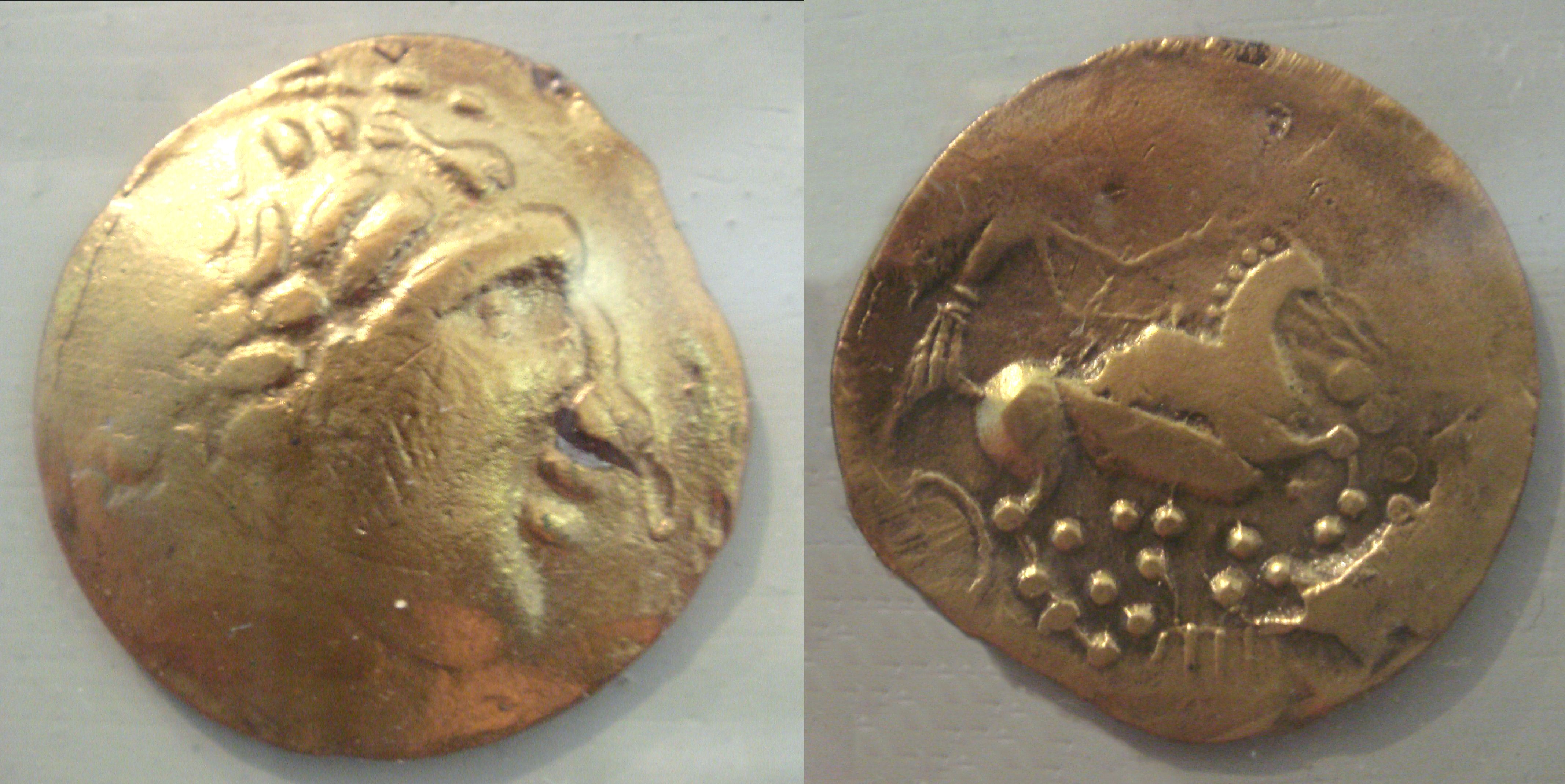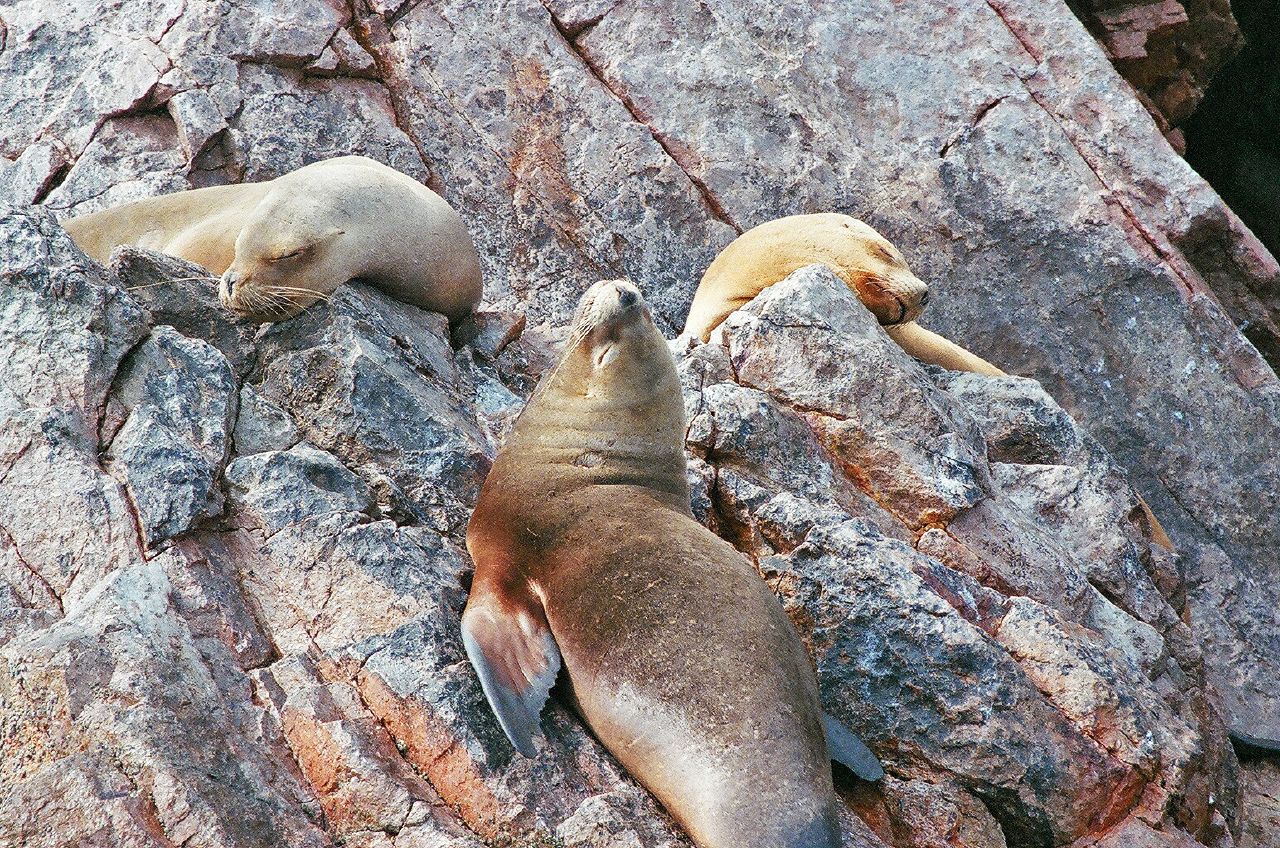|
Collared Antshrike
The collared antshrike (''Thamnophilus bernardi'') is a species of bird in the family Thamnophilidae. It is found in Ecuador and Peru. Its natural habitats are subtropical or tropical dry forests, subtropical or tropical dry shrubland, and subtropical or tropical moist shrubland. Taxonomy The collared antshrike was described by the French naturalist René Lesson in 1844 and given the binomial name ''Thamnophilus bernardi'' (the genus was misspelled as ''Tamnophilus'') with the type locality of Guayaquil in Ecuador. The specific epithet honours Captain Bernard, a French mariner and collector from Bordeaux. The collared antshrike was subsequently placed in the genus ''Sakesphorus''. A molecular phylogenetic study published in 2007 found that ''Sakesphorus'' was polyphyletic and that three species including the collared antshrike were embedded within a clade containing members of ''Thamnophilus''. The collared antshrike was therefore moved back to its original genus. See also * M ... [...More Info...] [...Related Items...] OR: [Wikipedia] [Google] [Baidu] |
Bordeaux
Bordeaux ( , ; Gascon oc, Bordèu ; eu, Bordele; it, Bordò; es, Burdeos) is a port city on the river Garonne in the Gironde department, Southwestern France. It is the capital of the Nouvelle-Aquitaine region, as well as the prefecture of the Gironde department. Its inhabitants are called ''"Bordelais"'' (masculine) or ''"Bordelaises"'' (feminine). The term "Bordelais" may also refer to the city and its surrounding region. The city of Bordeaux proper had a population of 260,958 in 2019 within its small municipal territory of , With its 27 suburban municipalities it forms the Bordeaux Metropolis, in charge of metropolitan issues. With a population of 814,049 at the Jan. 2019 census. it is the fifth most populated in France, after Paris, Lyon, Marseille and Lille and ahead of Toulouse. Together with its suburbs and exurbs, except satellite cities of Arcachon and Libourne, the Bordeaux metropolitan area had a population of 1,363,711 that same year (Jan. 2019 censu ... [...More Info...] [...Related Items...] OR: [Wikipedia] [Google] [Baidu] |
Birds Described In 1844
Birds are a group of warm-blooded vertebrates constituting the class Aves (), characterised by feathers, toothless beaked jaws, the laying of hard-shelled eggs, a high metabolic rate, a four-chambered heart, and a strong yet lightweight skeleton. Birds live worldwide and range in size from the bee hummingbird to the ostrich. There are about ten thousand living species, more than half of which are passerine, or "perching" birds. Birds have whose development varies according to species; the only known groups without wings are the extinct moa and elephant birds. Wings, which are modified forelimbs, gave birds the ability to fly, although further evolution has led to the loss of flight in some birds, including ratites, penguins, and diverse endemic island species. The digestive and respiratory systems of birds are also uniquely adapted for flight. Some bird species of aquatic environments, particularly seabirds and some waterbirds, have further evolved for swimming. ... [...More Info...] [...Related Items...] OR: [Wikipedia] [Google] [Baidu] |
Birds Of The Tumbes-Chocó-Magdalena
Birds are a group of warm-blooded vertebrates constituting the class Aves (), characterised by feathers, toothless beaked jaws, the laying of hard-shelled eggs, a high metabolic rate, a four-chambered heart, and a strong yet lightweight skeleton. Birds live worldwide and range in size from the bee hummingbird to the ostrich. There are about ten thousand living species, more than half of which are passerine, or "perching" birds. Birds have whose development varies according to species; the only known groups without wings are the extinct moa and elephant birds. Wings, which are modified forelimbs, gave birds the ability to fly, although further evolution has led to the loss of flight in some birds, including ratites, penguins, and diverse endemic island species. The digestive and respiratory systems of birds are also uniquely adapted for flight. Some bird species of aquatic environments, particularly seabirds and some waterbirds, have further evolved for swimming. Bi ... [...More Info...] [...Related Items...] OR: [Wikipedia] [Google] [Baidu] |
Birds Of Peru
Birds are a group of warm-blooded vertebrates constituting the class (biology), class Aves (), characterised by feathers, toothless beaked jaws, the Oviparity, laying of Eggshell, hard-shelled eggs, a high Metabolism, metabolic rate, a four-chambered heart, and a strong yet lightweight Bird skeleton, skeleton. Birds live worldwide and range in size from the bee hummingbird to the Common ostrich, ostrich. There are about ten thousand living species, more than half of which are passerine, or "perching" birds. Birds have whose development varies according to species; the only known groups without wings are the extinct moa and elephant birds. Wings, which are modified forelimbs, gave birds the ability to fly, although further evolution has led to the Flightless bird, loss of flight in some birds, including ratites, penguins, and diverse endemism, endemic island species. The digestive and respiratory systems of birds are also uniquely adapted for flight. Some bird species of a ... [...More Info...] [...Related Items...] OR: [Wikipedia] [Google] [Baidu] |
Birds Of Ecuador
Birds are a group of warm-blooded vertebrates constituting the class Aves (), characterised by feathers, toothless beaked jaws, the laying of hard-shelled eggs, a high metabolic rate, a four-chambered heart, and a strong yet lightweight skeleton. Birds live worldwide and range in size from the bee hummingbird to the ostrich. There are about ten thousand living species, more than half of which are passerine, or "perching" birds. Birds have whose development varies according to species; the only known groups without wings are the extinct moa and elephant birds. Wings, which are modified forelimbs, gave birds the ability to fly, although further evolution has led to the loss of flight in some birds, including ratites, penguins, and diverse endemic island species. The digestive and respiratory systems of birds are also uniquely adapted for flight. Some bird species of aquatic environments, particularly seabirds and some waterbirds, have further evolved for swimming. B ... [...More Info...] [...Related Items...] OR: [Wikipedia] [Google] [Baidu] |
Fauna Of Peru
Peru has some of the greatest biodiversity in the world. It belongs to the select group of mega diverse countries because of the presence of the Andes, Amazon rainforest, and the Pacific Ocean. It has the fourth-most tropical forests of any country and the ninth-most forest area. Natural protected areas The Constitution of Peru of 1993 recognized the natural resources and ecosystem variety of its country as a heritage. In 1900, the National System of Natural Areas that are protected by the Peruvian Government (SINANPE) was created. This entity depends on the National Institute of Natural Resources (INRENA). They also created a map of protection and preservation of historical - cultural heritage and nature. This map has 49 Natural Areas (10% of the country surface) that are preserved by the Government: 8 National Parks, 8 National Reservations, 6 National Sanctuaries, 3 Historical Sanctuaries, 4 National Forests, 6 Protection Forests, 1 Communal Reservation, 2 Hunting enc ... [...More Info...] [...Related Items...] OR: [Wikipedia] [Google] [Baidu] |
Maranon Antshrike
The Maranon antshrike (''Thamnophilus shumbae'') is a passerine bird in the family Thamnophilidae according to some taxonomists. This non-migratory bird is native to Peru. Etymology The specific name "''shumbae''" derives from the locality of Shumba, Cajamarca, Peru. Taxonomy This species was previously classified by BirdLife International's ''Handbook of the Birds of the World'' as a subspecies of the collared antshrike (''T. bernardi''). The South American Classification Committee of the American Ornithological Society, the International Ornithological Committee, and the Clements taxonomy have not accepted the split and retain the taxon's subspecies status.Remsen, J. V., Jr., J. I. Areta, E. Bonaccorso, S. Claramunt, G. Del-Rio, A. Jaramillo, D. F. Lane, M. B. Robbins, F. G. Stiles, and K. J. Zimmer. Version 4 March 2024. A classification of the bird species of South America. American Ornithological Society. https://www.museum.lsu.edu/~Remsen/SACCBaseline.htm retrieved Mar ... [...More Info...] [...Related Items...] OR: [Wikipedia] [Google] [Baidu] |
Thamnophilus
''Thamnophilus'' is a genus of antbird in the antbird family, Thamnophilidae. The species in this genus are commonly known as antshrikes. They are insectivores that feed by gleaning prey from foliage and are found in the Neotropics. The genus ''Thamnophilus'' was introduced by the French ornithologist Louis Vieillot in 1816. The name combines the Ancient Greek words ''thamnos'' "bush" and ''philos'' "loving". The type species was subsequently designated as the barred antshrike. The genus contains the following species: * Collared antshrike, ''Thamnophilus bernardi'' * Black-backed antshrike, ''Thamnophilus melanonotus'' * Band-tailed antshrike, ''Thamnophilus melanothorax'' * Barred antshrike, ''Thamnophilus doliatus'' * Chapman's antshrike, ''Thamnophilus zarumae'' * Bar-crested antshrike, ''Thamnophilus multistriatus'' * Chestnut-backed antshrike, ''Thamnophilus palliatus'' * Lined antshrike, ''Thamnophilus tenuepunctatus'' * Black-hooded antshrike, ''Thamnophilus brid ... [...More Info...] [...Related Items...] OR: [Wikipedia] [Google] [Baidu] |
Clade
A clade (), also known as a monophyletic group or natural group, is a group of organisms that are monophyletic – that is, composed of a common ancestor and all its lineal descendants – on a phylogenetic tree. Rather than the English term, the equivalent Latin term ''cladus'' (plural ''cladi'') is often used in taxonomical literature. The common ancestor may be an individual, a population, or a species (extinct or extant). Clades are nested, one in another, as each branch in turn splits into smaller branches. These splits reflect evolutionary history as populations diverged and evolved independently. Clades are termed monophyletic (Greek: "one clan") groups. Over the last few decades, the cladistic approach has revolutionized biological classification and revealed surprising evolutionary relationships among organisms. Increasingly, taxonomists try to avoid naming taxa that are not clades; that is, taxa that are not monophyletic. Some of the relationships between org ... [...More Info...] [...Related Items...] OR: [Wikipedia] [Google] [Baidu] |
Polyphyletic
A polyphyletic group is an assemblage of organisms or other evolving elements that is of mixed evolutionary origin. The term is often applied to groups that share similar features known as homoplasies, which are explained as a result of convergent evolution. The arrangement of the members of a polyphyletic group is called a polyphyly .. ource for pronunciation./ref> It is contrasted with monophyly and paraphyly. For example, the biological characteristic of warm-bloodedness evolved separately in the ancestors of mammals and the ancestors of birds; "warm-blooded animals" is therefore a polyphyletic grouping. Other examples of polyphyletic groups are algae, C4 photosynthetic plants, and edentates. Many taxonomists aim to avoid homoplasies in grouping taxa together, with a goal to identify and eliminate groups that are found to be polyphyletic. This is often the stimulus for major revisions of the classification schemes. Researchers concerned more with ecology than with syste ... [...More Info...] [...Related Items...] OR: [Wikipedia] [Google] [Baidu] |
Molecular Phylogenetic
Molecular phylogenetics () is the branch of phylogeny that analyzes genetic, hereditary molecular differences, predominantly in DNA sequences, to gain information on an organism's evolutionary relationships. From these analyses, it is possible to determine the processes by which diversity among species has been achieved. The result of a molecular phylogenetic analysis is expressed in a phylogenetic tree. Molecular phylogenetics is one aspect of molecular systematics, a broader term that also includes the use of molecular data in taxonomy and biogeography. Molecular phylogenetics and molecular evolution correlate. Molecular evolution is the process of selective changes (mutations) at a molecular level (genes, proteins, etc.) throughout various branches in the tree of life (evolution). Molecular phylogenetics makes inferences of the evolutionary relationships that arise due to molecular evolution and results in the construction of a phylogenetic tree. History The theoretical ... [...More Info...] [...Related Items...] OR: [Wikipedia] [Google] [Baidu] |

.jpg)

